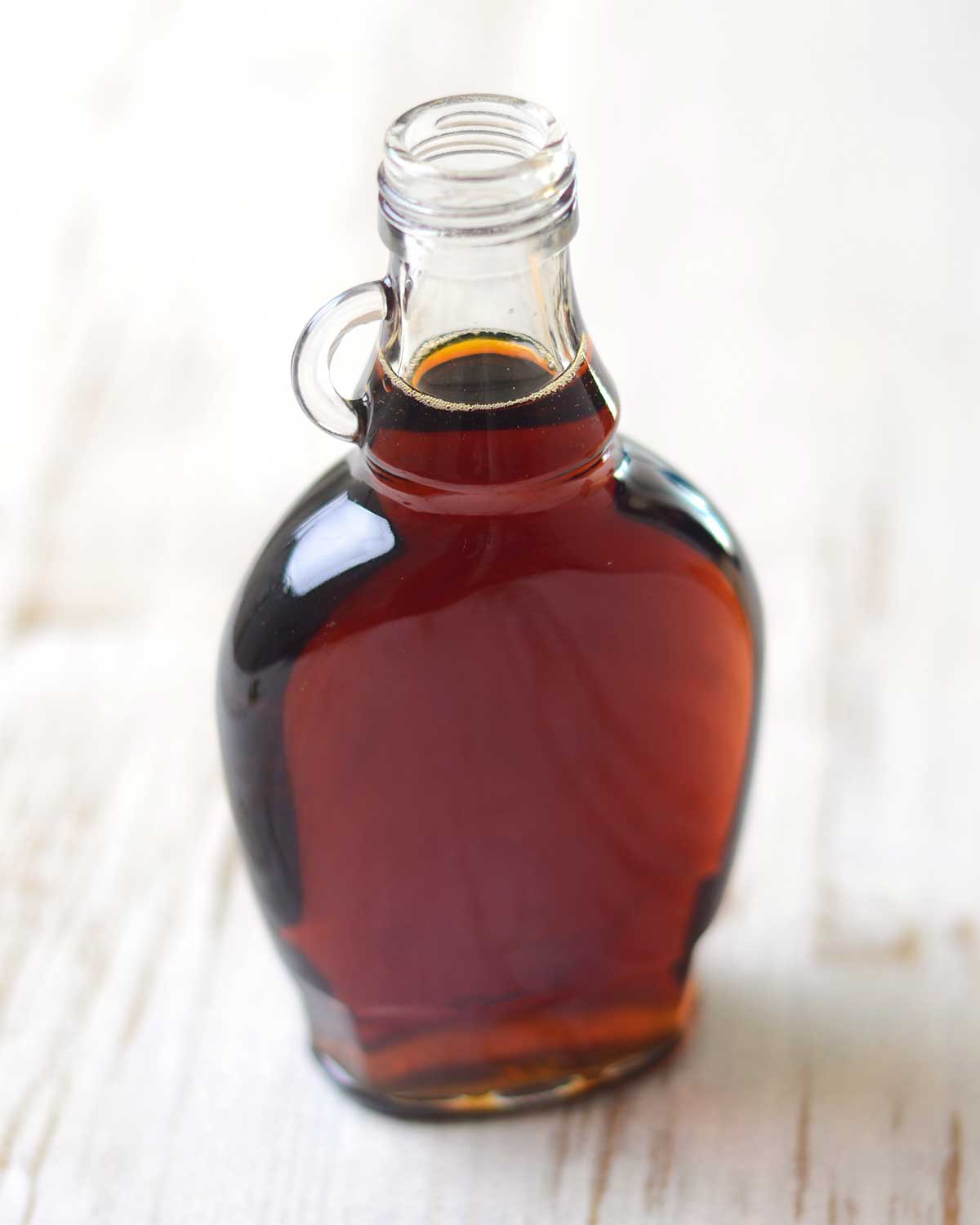
“I love the flavor, the smell, and the color of pure maple syrup, a combination of sensual pleasures nobody has been able to capture with artificial ingredients,” writes Ken Haedrich in the Maple Syrup Cookbook, 3rd edition: Over 100 Recipes for Breakfast, Lunch & Dinner (Storey Publishing, 2015). “In an age when so many of our comestibles are nothing more than machine-made synthetics, maple syrup remains an oasis of purity, still made on the farm by men and women whose connection with the earth is part of their daily lives.”
Which means you don’t want to waste a drop of it. And, as with so many ingredients, proper storage is essential.
How should I store maple syrup?
“I’ve never encountered storage problems with maple syrup, simply because it’s used up very quickly around here,” Haedrich writes in his book. “Generally speaking, however, syrup will keep best if it is transferred to clear, glass containers and kept cold.”
This means keeping your maple syrup in the fridge, where it will keep for up to a year. And if you have surplus from that trip to a maple farm or you bought several bottles of your preferred brand when it was on sale, you can freeze it. “Freezing is the smartest option for long-term storage, one especially worth considering if your refrigerator space is limited,” notes Haedrich.
Want to Save This?
Any unopened bottles of maple syrup will last in the pantry at room temperature for up to 1 year.
Does it matter what I store it in?
While maple syrup stored in glass and refrigerated maintains its flavor indefinitely, Haedrich warns that syrup stored in tin cans can pick up a tinny flavor. And maple syrup stored in plastic only maintains its flavor and color for three to six months because of the material’s breathability.
What If I find mold on my maple syrup? (Ewww!)
Even if you store maple syrup in the fridge, you may, on occasion, find mold growing on your syrup. “As a wild food, maple syrup contains trace amounts of natural yeast, making it susceptible to molding or fermenting,” according to the website for Vermont-based Maple Farms, the leading independent supplier of pure and organic maple syrup and maple sugar in the United States. “Once your maple syrup is opened, it must be refrigerated to maintain freshness.”
Although you don’t necessarily need to throw out moldy maple syrup. “Strain it through cheesecloth and then bring the syrup to a boil,” Haedrich advises. “Pour it back into a clean container, and your syrup will be perfectly safe to use.”
Similarly, if your maple syrup crystallizes, place the glass container in a pan of very hot water, he instructs, to melt the crystals and restore it to its liquid state.
Now, excuse us while we go fulfill our Little House on the Prairie fantasies with some Maple Syrup Snow.









Interesting! I buy mine in the Costco-size vat. It’s a plastic container and I’ve always refrigerated it in its packaging and transferred small amounts to a flip-gasket type glass bottle for easy serving. I’ll try transferring it all to glass and see if it improves the flavor of the last bits.
I’m totally with Haedrich. There is no substitute for the real thing! But when I lived in Vancouver, BC I could buy granular maple sugar. That was wonderful for baking and cooking. I brought a lot of it back to LA but, alas!, it’s long gone. It was nice to be able to add the flavor of maple without having to deal with the extra liquid component.
Do let us know if you find that works for you, Rainey! And yes, nothing quite like maple sugar. I have been rationing mine.